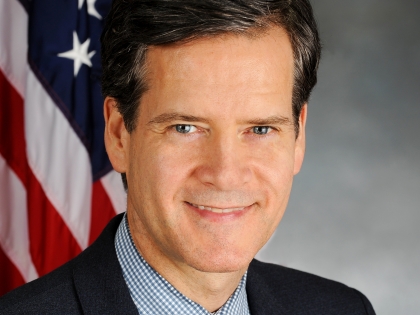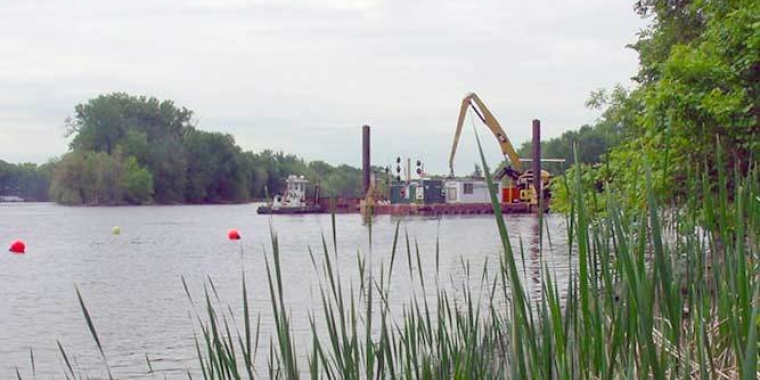
Senator Hoylman Testimony to E.P.A. on Proposed Decision to Allow G.E. to Halt Hudson River Dredging
Brad Hoylman
September 28, 2015

SENATOR HOYLMAN TO E.P.A.: G.E. MUST FINISH THE JOB IN THE HUDSON
SUBMITS PUBLIC COMMENTS URGING E.P.A. TO REJECT PLAN TO ALLOW G.E. TO QUIT DREDGING
NEW RESEARCH REVEALS INCOMPLETE CLEANUP OF PCBs
Hoylman: The polluter must pay. It's outrageous that we'd let a $650 billion company off the hook and conceivably stick taxpayers with the remainder of the cleanup bill.
NEW YORK, NY -- In response to the Environmental Protection Agency’s (E.P.A.) decision to permit General Electric (G.E.) to dismantle its PCB processing facility in Fort Edward, State Senator Brad Hoylman (D-Manhattan) today submitted public comments calling on the E.P.A. to immediately halt the dismantling of the facility and require G.E. to execute a comprehensive cleanup the Hudson River.
G.E. is at the end of a six-year, $1 billion dredging operation agreement that requires the company to remove nearly 30 years worth of dangerous PCB chemicals that it knowingly dumped into the river.
In his comments, Senator Hoylman asserts that a report issued earlier this year by the National Oceanic and Atmospheric Administration demonstrates that the original models used by the E.P.A to plan the cleanup were “overly optimistic,” and necessitate that the E.P.A. “revisit the terms of the 2005 agreement.”
Senator Hoylman said in a statement: “It’s outrageous that we'd let a $650 billion company off the hook and conceivably stick taxpayers with the remainder of the cleanup bill. It is incumbent on G.E. to reverse years of dumping that have directly contributed to the economic and environmental degradation of communities throughout the Hudson region. The bottom line is the polluter must pay.”
In June, Senator Hoylman, the Ranking Member on the Senate Environmental Conservation Committee, convened a panel discussion with environmental lawyers and advocates on the state of the Hudson River. During the discussion, experts noted that G.E., one of the largest corporations on the planet, was planning to renege on its obligations well before removing enough PCBs. The toxins have been linked to myriad health risks including cancer, low birth weight, thyroid disease, as well as learning, memory and immune system disorder.
Senator Hoylman’s full comments to the E.P.A. are included below.
PUBLIC COMMENTS BY NEW YORK STATE SENATOR BRAD HOYLMAN ON THE E.P.A.’S DRAFT PROCESSING FACILITY DEMOBILIZATION AND RESTORATION PLAN FOR THE PCB PROCESSING FACILITY IN FORT EDWARD, NEW YORK
September 28, 2015
Thank you for the opportunity to submit public comments on the E.P.A.’s draft Processing Facility Demobilization and Restoration Plan, which outlines the proposed procedures by which General Electric (“G.E.”) will dismantle and decontaminate the 110 acre PCB processing facility in Fort Edward, New York along the Hudson River. As the ranking member of the New York State Senate Environmental Conservation Committee, and the representative of a senate district in Manhattan that abuts the Hudson River, I write to express my deep concerns with allowing the dismantling of the PCB processing facility to proceed and urge the E.P.A. to revisit the terms of its 2005 dredging agreement with G.E. (“the 2005 agreement”), in light of recent research that calls into question the efficacy of the agreement’s remedy.
In May of this year, the National Oceanic and Atmospheric Administration (“NOAA”) issued a report examining the model projections used as the basis of the 2005 agreement, finding that the “original models used were overly optimistic,” and overestimated the rate of natural recovery in the Hudson River. As a result, achieving the E.P.A.’s remedial objectives “will take longer than predicted.” Ultimately, NOAA concluded, “[a]dditional removal of PCB-contaminated sediment in the Upper Hudson River [is] needed to achieve [the] reductions in Lower Hudson River fish PCBs” that were initially anticipated by the E.P.A.
In other words, because of the flawed modeling used by the E.P.A. over a decade ago, if G.E.’s federally-mandated dredging is allowed to conclude this year and the Fort Edward PCB processing facility is dismantled, the E.P.A. will have fallen far short in achieving its intended remediation. According to NOAA, surface sediment PCBs in the Upper Hudson River will remain at higher rates longer than initially predicted and the reduction of PCB levels in fish found in the Lower Hudson River will take far longer – more than four decades – than the flawed models projected.
The Hudson River – from the foothills of the Adirondacks to Manhattan’s Battery – is where diverse populations, geographies, natural resources, and economic opportunities converge. Allowing the dredging of the Hudson to fall short of the E.P.A.’s remediation goals puts the health of millions of New Yorkers along the 200-mile span of the river at risk. The PCB contaminants left behind are probable human carcinogens that have been linked to other adverse health effects such as low birth weight, thyroid disease, and immune system disorders.
It is incumbent upon the E.P.A. to ensure that the dredging of the Hudson River by G.E. actually meets the remediation goals it set out to achieve in the 2005 agreement. NOAA’s analysis of the flawed projection models used by the agency raise sufficient questions about whether the efficacy of the remedial actions meet the standard set in federal law under 42 U.S.C. 9621(d), “attain[ing] a degree of cleanup of hazardous substances, pollutants, and contaminants […] which assures protection of human health and the environment.”
On the basis of the foregoing, I once again strongly urge the E.P.A. to immediately halt the dismantling of the Fort Edward PCB processing facility and revisit the terms of the 2005 agreement to ensure that G.E. completes a thorough and effective cleanup of the Hudson River PCBs.
###
Share this Article or Press Release
Newsroom
Go to Newsroom
Analysis of NYC Traffic Congestion and Emergency Response Times
September 20, 2024

Letter to Speaker Adams on Protecting our Environment and the CACP
September 17, 2024

Proposal 1: Equal Rights Amendment
September 10, 2024